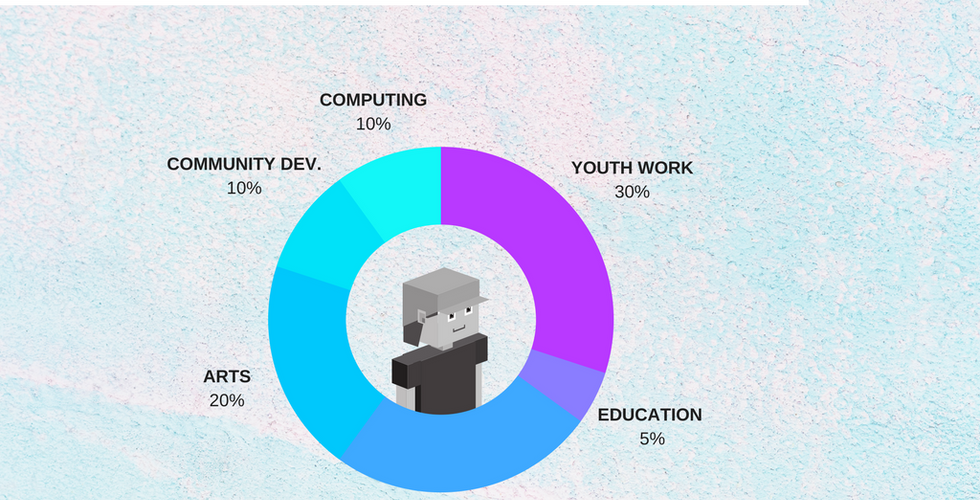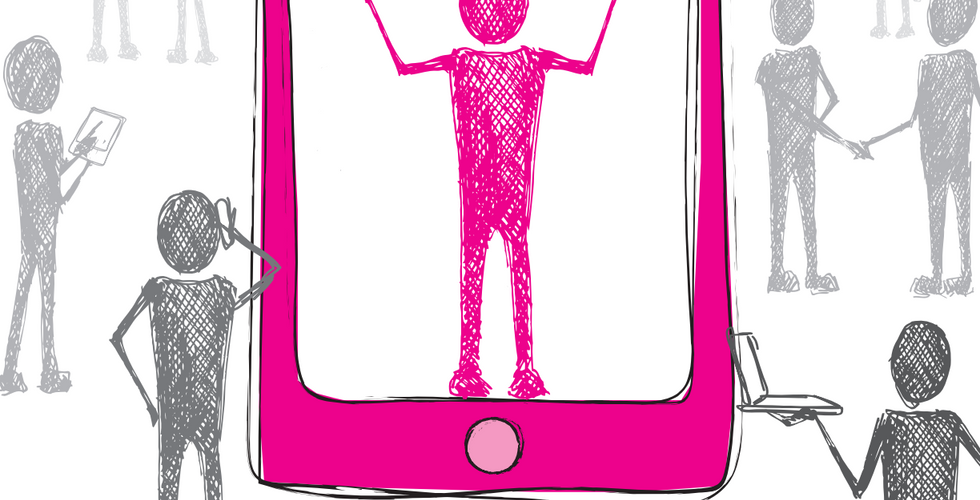The problem of Digital Youth Work : NOT all-singing / all-dancing.
- Alicja Pawluczuk
- Mar 19, 2019
- 6 min read

I tend to have a quite positive outlook on the impact of digital technologies on society. Both in my practical digital inclusion work and PhD research, I have witnessed inspiring examples of positive social change which took place thanks to human-computer interactions. I’d like to believe that technologies (if used ethically and mindfully) can empower us to work towards a more democratic and inclusive society. Especially, in the context of youth work, where many digital projects have already reported some promising results (for example TTS.Digital, Adobe Youth Voices)
However, while carrying out my doctoral investigation into the impact of digital technologies on the youth work sector in the United Kingdom, I learned that it is not all “singing and dancing” after all.
Yes, the technologies have brought about innovative learning solutions and allowed young people and youth workers to connect better via social media platforms. According to the data I collected, youth workers tend to start their conversation by saying that digital technologies enhance their youth practice and provide young people with direct ways to co-create and co-lead initiatives.
However, apart from the overall enthusiastic outlook on youth-digital technologies relationships, I also witnessed quite a lot of skepticism and doubt in the youth work sector.
For example, I learned that there is a tendency to overemphasise the stories of positive impact – primarily to meet funders criteria. Youth workers admitted that they are often under pressure to say “how wonderful their project was”. Some also complained about not having enough time to think or chat about the problems that occurred, but often ask themselves questions such as:
Does technology make us less or more connected? How do we know if we are doing the right thing ethically? How can we keep up with the latest technologies (without getting addicted to them)? How can we ensure equal access and provide a valuable learning experience? And finally, what will happen if our project does not fit into the glorifying and empowering narrative of the national digital youth strategy?

Interestingly, it wasn’t just the youth workers who mentioned the negative impacts and problems associated with digital youth work.
In my recent workshop with a group of young projects participants, I heard one of them saying that: [in digital youth projects] impact is not just about positive stuff, I joined projects which went horribly wrong and yes, that had negative impact. It is important to talk about this too…”.
This overly positive outlook on digital youth work has also been covered by two reports published in 2017: 1) From Good Intentions to Real Outcomes: Equity by Design in Learning Technologies by Justin Reich and Mizuko Ito. 2) #NotWithoutMe: A digital world for all? by Anna Grant and Gina Wilson.
Both reports provide important arguments to the discussion in how we view the nature of digital youth work. In this blog post, I’d like to briefly discuss some of the key points addressed in the reports and link them to some of my PhD data.
1) Digital youth work and equality

More information about Digital Youth Work ---> Developing digital youth work Policy recommendations, training needs and good practice examples: Expert group set up under the European Union Work Plan for Youth for 2016-2018
According to the data that I gathered so far (20 interviews + 1 focus group with digital youth workers in the UK), many youth workers are keen to questions the 'liberating potential' of digital technologies. They are not only not sure if their digital work has got the right and long-term impact on young people, but also stress the role of digital technologies as social class symbols among young people. Similar problem has also been mentioned by #NotWithoutMe report:
"inequality of access was experienced by the young people in the Mencap project, as some young people had the latest smartphones whereas others in the project did not have access to a mobile phone at all. However, it is worth noting that this was not reported throughout all the projects, notably the young people involved in the Signal project all reported a high degree of access to personal technology" ( Wilson & Grant, p.52).
The empowering potential/impact of digital technologies in youth work setting has been questioned by both reports. Firstly, Reich and Ito (2017) argued that:
“Despite this promise, however, evidence is mounting that these new technologies tend to be used and accessed in unequal ways, and they may even exacerbate inequality” (p.3)
In the United Kingdom, Grant and Wilson’s report also outlined the need for a more critical approach to how use digital technologies to fight social injustice:
“Digital tools have been hailed as the great equaliser, connecting people across all societal groups or boundaries and amplifying the voices of those who are traditionally marginalised. However, digital tools are not immune to imbalances in power structures. In some cases, online platforms can serve to reinforce power imbalance.” (p.59)
The problem of power imbalance was also a common theme in the interviews I conducted. Although, most of the study participants said that digital technologies provide innovative and participatory solutions in youth work, there was always a question of who really benefits from their activity? Some said that it is the big companies that get the profit from young people playing online or using apps for communications.

Then there was problem of affordability and equipment availability across different youth clubs in the United Kingdom – from cutting age technology to basic PCs. Whilst some youth workers insisted that more investment is needed to make youth spaces truly innovative, others would like to have a properly functioning wi-fi to start with. It was clear that: "digital tools are not immune to imbalances in power structures. In some cases, online platforms can serve to reinforce power imbalance. The dominant values of digital tools represent the values of developers, not all societal interests are equally represented in the tech sector" (Wilson & Grant, p.59)
2) Community, culture and inclusion in digital youth work
Digital inclusion has been on the national agenda for a while now (see SCVO). We all know that it is necessary for the younger generations to become not only digitally aware citizens but active digital creators. The optimistic vision of having young people behind the steering wheel of the digital revolution sounds extremely exciting. In fact, as a digital practitioner and a lecturer at Edinburgh Napier University, I often use this type of metaphors myself to encourage students to take an active ownership of their data online. However, through my work and research, I realised that digital youth inclusion work can be a very difficult and demanding field to be in.

For example, my recent interviews highlighted the fact that digital youth workers have to be extremely flexible in their approach young people's needs. Similarly to the traditional of youth work, there is an emphasis on young people's personal development. This means working around young people's everyday development needs, plus the digital ones. Wilson and Grant describe this as a logistical challenge: "how to balance digital skills training to ensure it is broad enough for the whole group but also suited to individual learners, learning styles and abilities? “ (2017, p.49). #NotWithoutMe report emphasise that digital youth workers “need to take account of other parts of young people’s identity – gender, race, religion etc as this all affects how young people interact online and use digital" (2017, p.50).
The importance of inclusive and holisitc approach to digital youth work is also highlighted by Reich and Ito. In their report, they suggest that cultural and social differences between young people should be carefully considered in youth - centred digital initiatives as:“Social distance, and the unexpected uptake of new technology is particularly pronounced when crossing national boundaries, as well as boundaries of culture and class” (2017, p.10 -11).
Both of the reports agree that "a diverse range of young people need to be visible and reflected in digital offering” (Wilson & Grant, 2017, p.50). As Reich & Ito state: "Equity-oriented efforts can bring developers, reformers, and learners together with common purpose, thus reducing social distance between these groups. When initiatives are co-developed and co-facilitated with stakeholders, they are more likely to be better attuned to important elements of social and cultural contexts, and learners are more likely to take ownership of these initiatives. (2017, p.12)
Digital youth work : it's not all-singing or all-dancing.
Digital youth work is a fascinating filed to be in both as a researcher and practitioner. My recent data findings show that there is definitely more work that needs to be done in terms of how we approach digital youth project facilitation. For the youth workers, this might mean extra level of criticality and flexibility when adopting technologies in their work. For the funders, it is making sure that youth workers are allowed to make mistakes and openly discuss their digital fears and project failures. And for these hyper-positive researchers (like myself), it's about considering the ethical, cultural and social aspects of digital youth interventions.















Comments